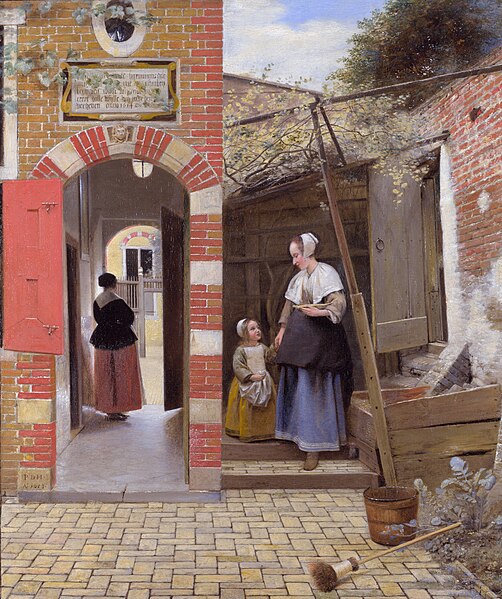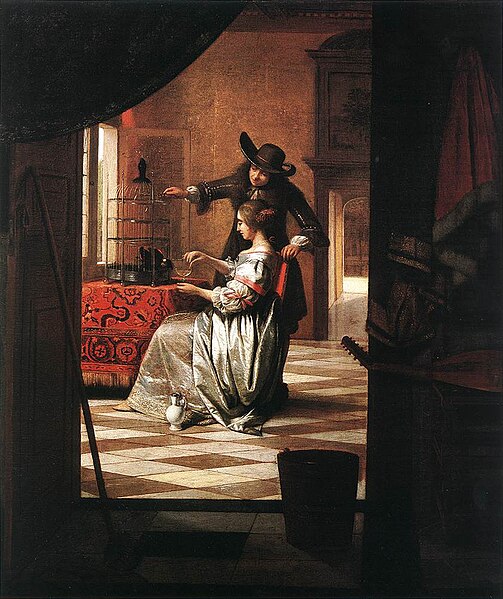Pieter de Hooch (Dutch: [ˈpitər də ɦoːx], also spelled "Hoogh" or "Hooghe"; 20 December 1629 – after 1683, was a Dutch Golden Age painter famous for his genre works of quiet domestic scenes with an open doorway. He was a contemporary, in the Delft Guild of St. Luke, of Jan Vermeer with whom his work shares themes and style. De Hooch was first recorded in Delft on 5 August 1652, when he and another painter, Hendrick van der Burch witnessed the signing of a will. He was active in 1683, but his date of death is unknown.
Possible self-portrait (1648-1649?)
Man Offering a Glass of Wine to a Woman c. 1653
The Courtyard of a House in Delft c. 1658
Pieter de Hooch - Couple with Parrot
Dutch Golden Age painting
Dutch Golden Age painting is the painting of the Dutch Golden Age, a period in Dutch history roughly spanning the 17th century, during and after the later part of the Eighty Years' War (1568–1648) for Dutch independence.
Johannes Vermeer, The Milkmaid (1658–1661)
Frans Hals' tronie, with the later title Gypsy Girl. 1628–30. Oil on wood, 58 cm × 52 cm (23 in × 20 in). The tronie includes elements of portraiture, genre painting, and sometimes history painting.
Paulus Potter, The Young Bull (1647); 3.4 metres wide. An unusually monumental animal painting that challenges the hierarchy of genres.
The Haarlem Painter's Guild in 1675, by Jan de Bray, whose self-portrait is the second from the left








